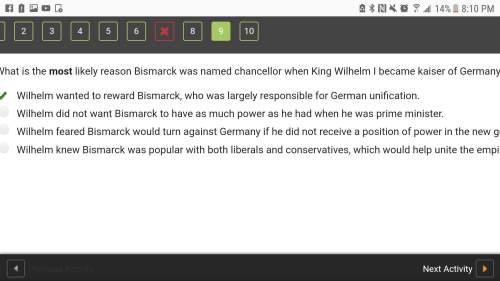
Mathematics, 20.02.2022 14:00 campbelldean
Consider these three numbers written in scientific notation: 6. 5 × 103, 5. 5 × 105, and 1. 1 × 103. Which number is the greatest, and by how many times is it greater than the smallest number? A. The greatest number is 5. 5 × 105. It is 5 times greater than the smallest number. B. The greatest number is 6. 5 × 103. It is 50 times greater than the smallest number. C. The greatest number is 5. 5 × 105. It is 500 times greater than the smallest number. D. The greatest number is 6. 5 × 103. It is 5,000 times greater than the smallest number. E. The greatest number is 5. 5 × 105. It is 5,000 times greater than the smallest number.

Answers: 1
Another question on Mathematics

Mathematics, 21.06.2019 16:20
An equation representing lyle’s hedge-trimming business is a = 12n - 300 where a is the amount of profit or loss in dollars and n is the number of hedges trimmed. how would the graph of lyle’s business change if the equation a = 10n - 300 represented his business? the graph would be flatter. the graph would be steeper. the graph would start closer to the origin. the graph would start lower on the y-axis.
Answers: 2

Mathematics, 21.06.2019 18:30
At the olympic games, many events have several rounds of competition. one of these events is the men's 100-meter backstroke. the upper dot plot shows the times (in seconds) of the top 8 finishers in the final round of the 2012 olympics. the lower dot plot shows the times of the same 8 swimmers, but in the semifinal round. which pieces of information can be gathered from these dot plots? (remember that lower swim times are faster.) choose all answers that apply: a: the swimmers had faster times on average in the final round. b: the times in the final round vary noticeably more than the times in the semifinal round. c: none of the above.
Answers: 2

Mathematics, 22.06.2019 00:30
What is the perimeter of an equilateral triangle if each side is (x+3)?
Answers: 1

Mathematics, 22.06.2019 00:30
Kevin has a spinner that has 10 equal sections and 2 sections of each color—red, blue, green, yellow, and purple. kevin spins the spinner 180 times. kevin determines about how many times the spinner will land on red or green, and his work is shown below. -kevin has the formula reversed; it should be the total number of sections over the number of red or green sections. -kevin should have used a 4 in the numerator because there are 2 red sections and 2 green sections. -kevin should multiply by the number of sections in the spinner rather than the total number of spins. -kevin calculated the prediction correctly and did not make any mistakes.
Answers: 1
You know the right answer?
Consider these three numbers written in scientific notation: 6. 5 × 103, 5. 5 × 105, and 1. 1 × 103....
Questions





Mathematics, 08.01.2021 19:40


Arts, 08.01.2021 19:40

Mathematics, 08.01.2021 19:40

Computers and Technology, 08.01.2021 19:40


Arts, 08.01.2021 19:40


Mathematics, 08.01.2021 19:40

Mathematics, 08.01.2021 19:40





Mathematics, 08.01.2021 19:40

Mathematics, 08.01.2021 19:40




